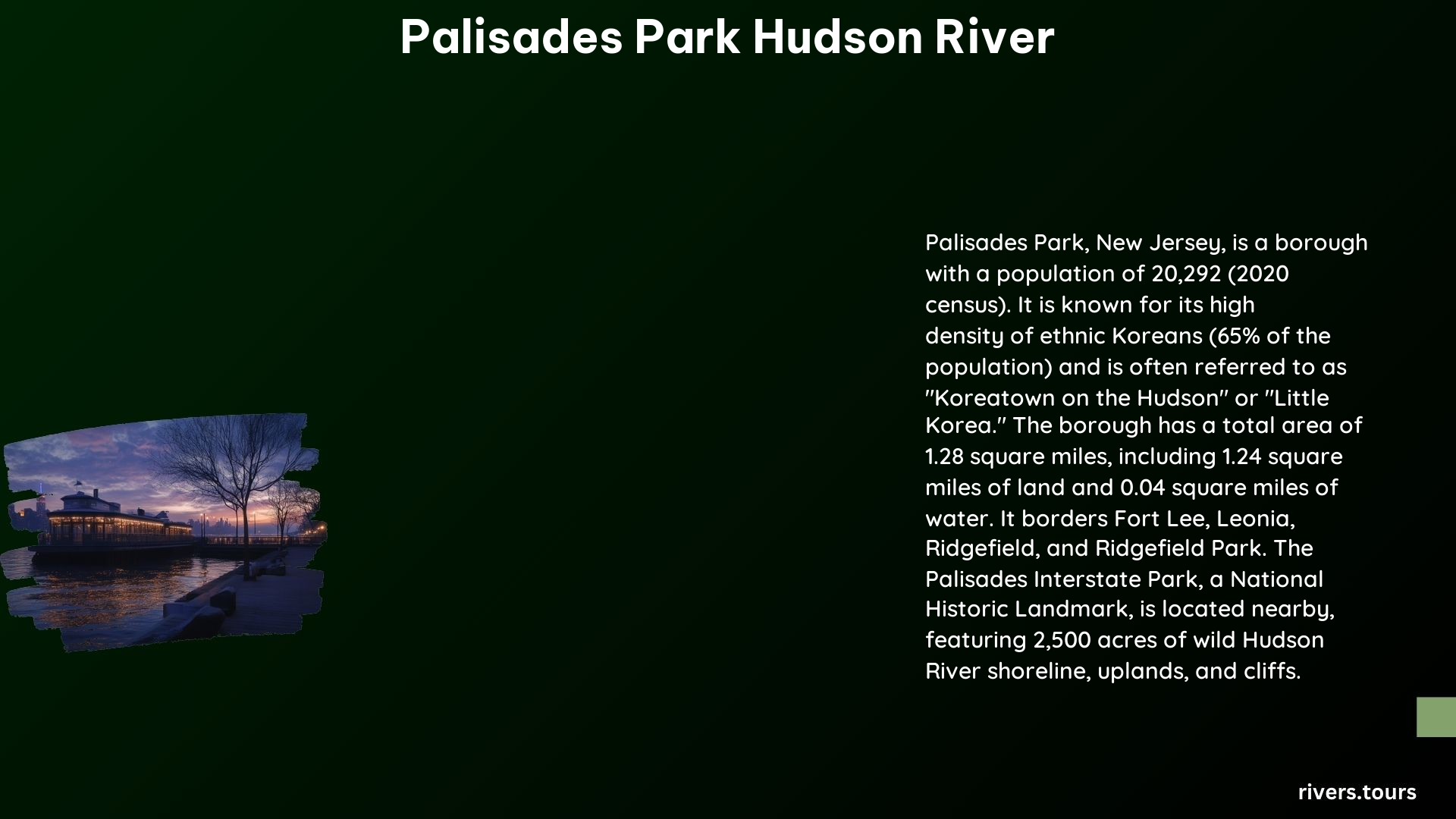The Palisades Park along the Hudson River is a unique geological formation that has been shaped over 200 million years. This comprehensive overview delves into the park’s geological history, popular hiking trails, scenic viewpoints, and preservation efforts.
What is the Geological History of the Palisades Park?

The Palisades are a series of steep cliffs that stretch for about 20 miles along the west shoreline of the Hudson River from New Jersey to New York. These cliffs are formed from a thick diabase sill, a type of igneous rock that intruded into the sedimentary layers of the Late Triassic Stockton and Lockatong Formations around 200 million years ago during the Triassic Period. This intrusion occurred as the supercontinent Pangaea began to break apart, leading to volcanic eruptions and the formation of the Central Atlantic Magmatic Province (CAMP).
Over time, the softer sedimentary layers above the sill were eroded by water, wind, and glaciers, exposing the harder diabase rock. The glaciers carved out the Hudson River Valley, creating a deep canyon that now lies beneath the river. The Palisades were designated a “National Natural Landmark” for being the best example in the United States of a thick diabase sill.
What are the Popular Hiking Trails and Scenic Viewpoints in the Palisades Park?

Palisades Interstate Park offers several hiking trails and scenic viewpoints, including:
- Long Path: A 12-mile trail that runs along the crest of the Palisades, offering stunning views of the Hudson River and New York City.
- Shore Trail: A 6-mile trail that follows the riverbank, providing access to scenic viewpoints and picnic areas.
- Forest View Trail: A 2-mile trail that takes hikers through the forested talus slopes, offering views of the cliffs and the river.
- Ross Dock Trail: A short trail that leads to the Ross Dock area, where hikers can see the olivine-enriched zone of the diabase sill.
- Bear Mountain Bridge: A scenic viewpoint that offers panoramic views of the Hudson River and the Palisades.
How Have the Palisades Park Been Preserved?
The Palisades were threatened by industrial activities such as quarrying and deforestation in the 19th century. However, through the efforts of conservation organizations and legislation, the area has been protected and preserved. Key milestones include:
- 1900: The Palisades Interstate Park Commission was established to manage and protect the park.
- 1930s: The Civilian Conservation Corps (CCC) and Works Progress Administration (WPA) built many of the park’s trails and facilities.
- National Natural Landmark Designation: The Palisades were designated a National Natural Landmark, recognizing their unique geological significance.
Conservation organizations involved in the preservation of the Palisades include the Palisades Interstate Park Commission, the New Jersey Federation of Women’s Clubs, and Scenic Hudson.
Conclusion
The Palisades Park along the Hudson River is a remarkable geological and natural wonder, offering visitors a chance to explore its rich history, scenic trails, and breathtaking viewpoints. Through the efforts of conservation organizations and legislation, this unique landscape has been preserved for future generations to enjoy.
References:
– Palisades Interstate Park Commission
– Exploring the Palisades: 200 Million Years of History
– The Palisades
– New York’s Palisades: Massive Cliffs with a Storied Past
– Mario M. Cuomo Bridge: Explore the Bridge Path & Palisades
